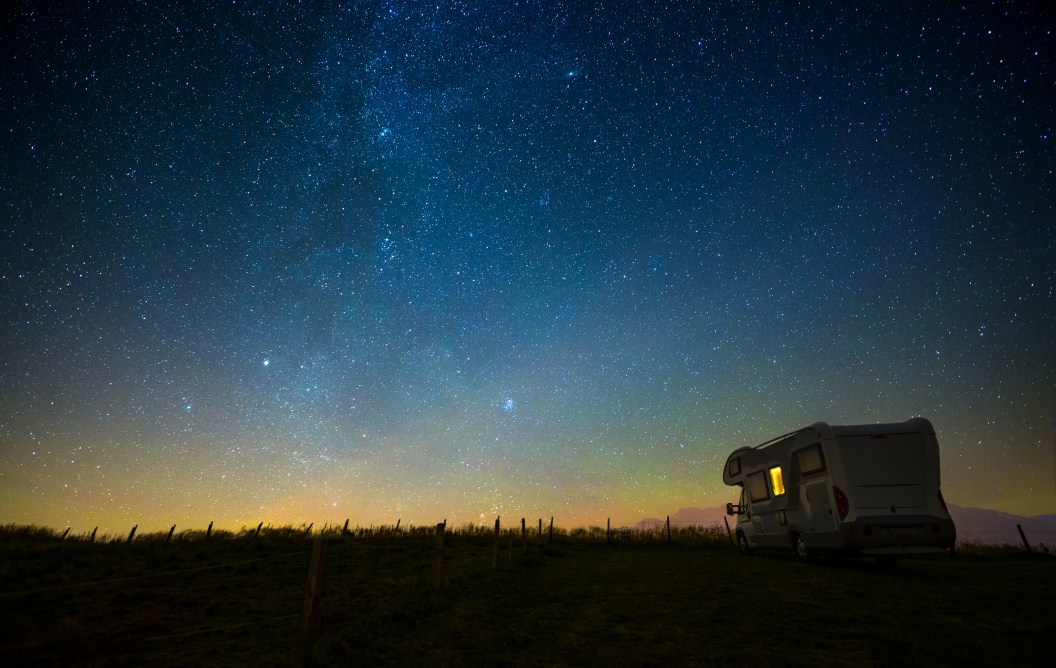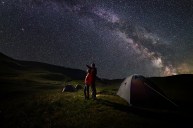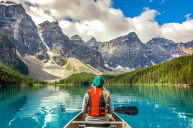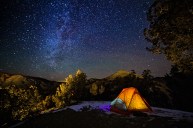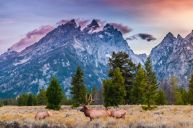Gazing up at starry night skies hoping for a shooting star sighting may just be the perfect way to spend a summer evening. While you can certainly stargaze close to home, why not plan a Dark Sky Road Trip this summer?
DarkSky (formerly the International Dark-Sky Association) has certified more than 200 locations around the world as official Dark Sky Places. These include American parks, reserves, and even some Urban Night Sky Places where you can gaze at the night skies near large cities, traditionally places where light pollution can make stargazing more difficult.
"They're special because [these] parks and communities have made a commitment to minimize the amount of exterior light throughout the areas that they manage," says Samuel Singer, Ph.D., executive director of the non-profit Wyoming Stargazing. "Going to those areas, you've got a better chance of seeing a really good sky."
String a few of these spots together on a road-trip itinerary and you've got a great way to explore new places and do some top-notch milky way peeping.
Trip 1: Four Corners Stargazing (Southwest)
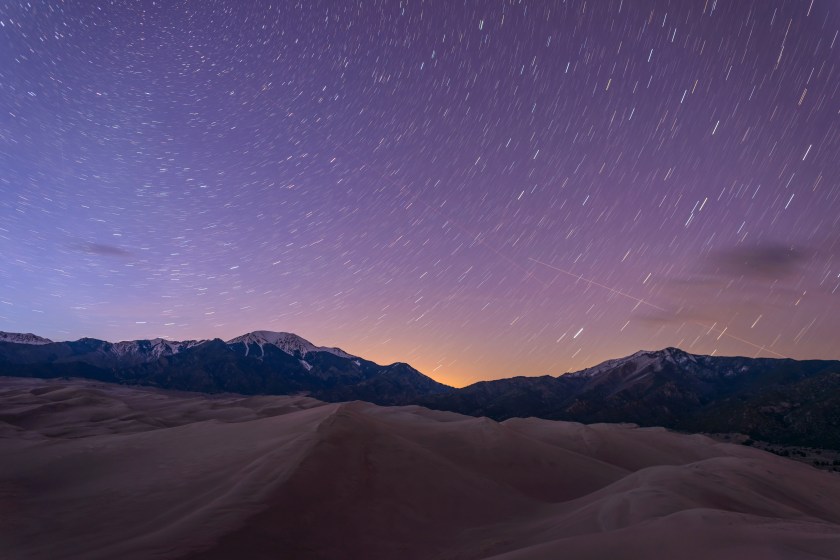
Getty Images, Sean Xu
Start in Colorado's Great Sand Dunes National Park and Preserve before making your way to Sedona, Scottsdale, and Fountain Hills in Arizona. As the Southwestern U.S. can experience very high temperatures, be sure to check the weather and plan accordingly for a safe stargazing trip if you're planning on visiting in the summer. This can also be a great adventure when it's a little cooler out.
Come for North America's tallest sand dunes and stay for the stars. This Gold Tier International Dark Sky Park's remote location makes it an epic place to watch the night sky and find the big dipper. For the full Great Sand Dunes National Park and Preserve experience, plan on camping at a designated campground, backpacking, or utilizing one of a variety of other camping options in the area. Read up on stargazing in the park and check out the free ranger program, where kids aged 5-12 can earn a Junior Ranger Night Explorer patch. Named the eighth International Dark Sky Community in the world in 2014, Sedona boasts incredible dark skies (no need for stargazing apps here) plus plenty of red rocks and daytime activities, from hiking to checking out the vortexes to enjoying the art scene. A number of campgrounds are available in the area, and Sedona is also home to many gorgeous resorts. Dark Sky Community Fountain Hills, Arizona, is near Scottsdale and the McDowell Mountains, and it's an incredible place to view the stars. Stay at ADERO Scottsdale Resort and enjoy the resort's special night sky programming with opportunities to use high-definition telescopes and learn from local astronomers. Or sign up for one of Stellar Adventure's stargazing tours to venture out into the desert where amateur astronomers can head out with a professional and explore the night sky. They also offer night vision equipment during certain times of the year to enhance the experience.
Trip 2: Great Lakes (Upper Midwest)
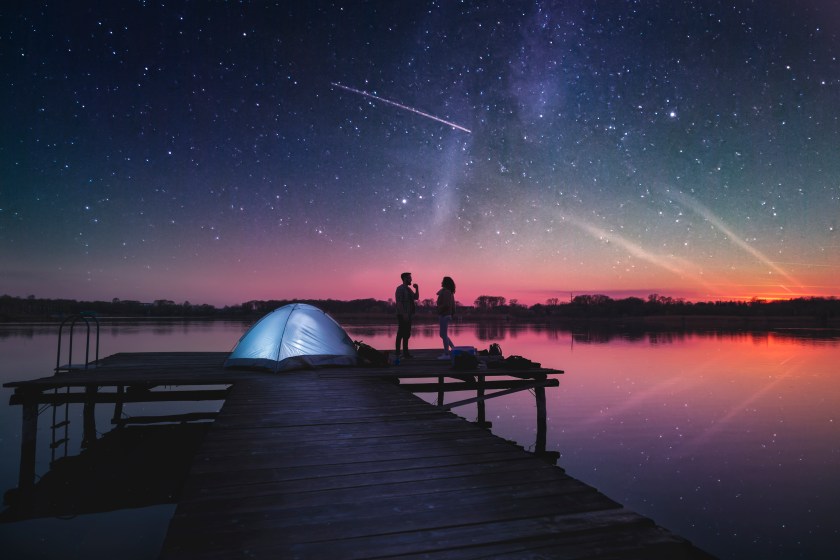
Getty Images, vladans
The Great Lakes region offers incredible stargazing opportunities, including a few areas in the Chicagoland region, like Homer Glen—a Dark Sky Community about 30 miles from Chicago—and Palos Preserves, an Urban Night Sky Place just 15 miles from downtown Chicago. Head up further north and explore Newport State Park in Door County, Wisconsin, as well as Keweenaw Dark Sky Park in Michigan, and Minnesota's epic Boundary Waters.
Door County, Wisconsin's Newport State Park became a Dark Sky Park in 2017. Situated on Lake Michigan's western shore at the tip of the Door County peninsula, it offers incredible views, beautiful bright stars, and lots of fun opportunities for backpacking.
At the top of Michigan's Keweenaw Peninsula, Keweenaw Dark Sky Park is a lovely remote spot to Orion and the north star (among many others!). Surrounded by wilderness, with Lake Superior on three sides, this park received its International Dark Sky Park designation in 2022. The historic Keweenaw Mountain Lodge serves as park headquarters, and an outdoor activities center provides plenty to do, from mountain biking to golfing. Beginners should be sure to familiarize themselves with the dark sky viewing areas before heading out.
Minnesota's Boundary Waters Canoe Area Wilderness is special for many reasons, including its designation as an International Dark Sky Sanctuary. There are fewer than 20 such sanctuaries in the world as of July 2023, and they are located in very remote settings and typically have few threats (such as encroaching cities). They are incredible areas to enjoy the dark skies and see celestial bodies like Jupiter and Mars from Earth. Boundary Waters hosts more than 2,000 campsites, a dozen hiking trails, and 1,200 miles of canoe water trails—along with endless night skies.
Trip 3: Eastern U.S. (Southeast)
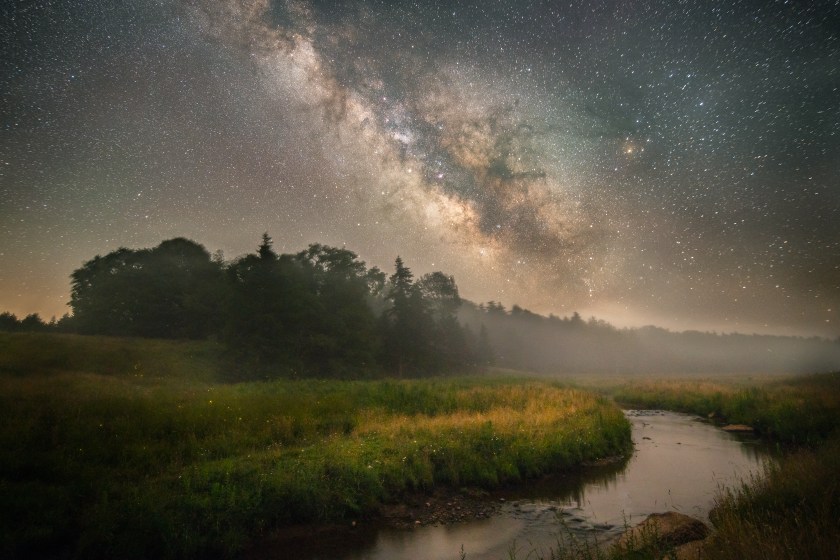
Getty Images, Jesse Thornton
While the Eastern U.S. has many populated cities, it's also home to areas with lovely dark skies and stars. Visit Tennessee's Pickett-Pogue International Dark Sky Park before venturing to West Virginia's Watoga State Park, then explore Virginia's five dark sky parks.
Tennessee's Pickett CCC Memorial State Park & Pogue Creek Canyon State Natural Area make up the Pickett-Pogue International Dark Sky Park. The park works in cooperation with local astronomy, science, and university programs to offer dark sky interpretive programs, as well as host star parties. Camping is available at Pickett CCC Memorial Park, and there are also cabins for rent.
In 2021, West Virginia's Watoga State Park received an International Dark Sky Park designation. It is managed for dark skies along with two other state-owned properties in the area, including Droop Mountain Battlefield State Park and Calvin Price State Forest. Monongahela National Forest is also nearby, providing an additional area with darkness.
Stay overnight at James River State Park in Virginia for incredible opportunities to see the night sky at this International Dark Sky Park. It includes an array of overnight options, including campsites, a bunkhouse, lodges, and cabins. Reservations are highly recommended. Virginia has four state parks that have received International Dark-Sky Association designations (as well as a county park), so after exploring James River State Park, consider a jaunt over to Natural Bridge State Park, Sky Meadows State Park, Staunton River State Park, or Rappahannock County Park to compare the views.
Read More: 9 Best National Parks in the U.S. for Every Kind of Outdoor Adventure
